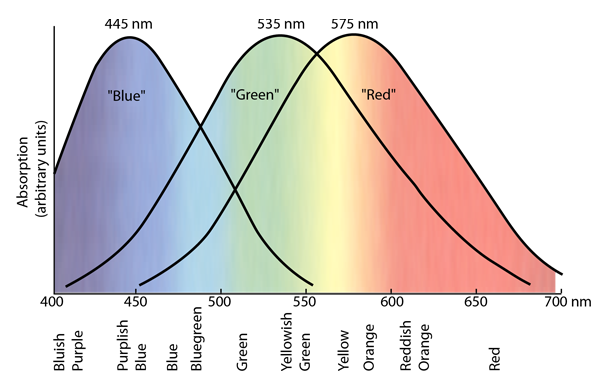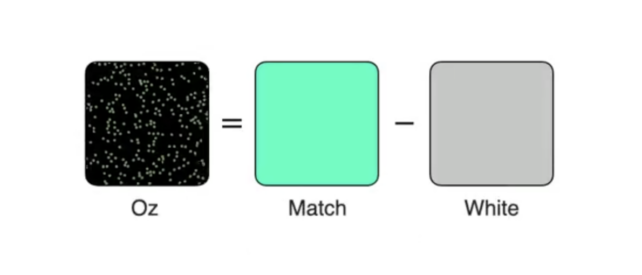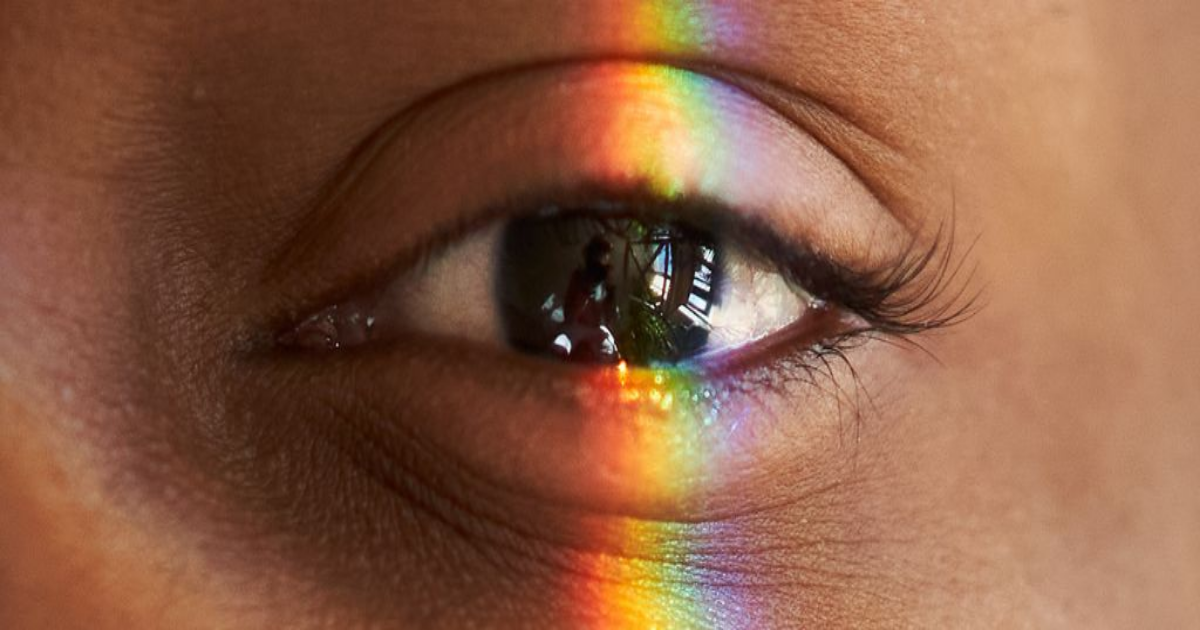For the first time, humans might have glimpsed a rainbow of color that lies just beyond our sight – including a “blue-green of unprecedented saturation”.
You’ve never seen it before because you can’t. It exists in a colorspace that our eyes have no access to.
At least, not naturally. Researchers at the University of California, Berkeley and the University of Washington now claim to have figured out a way to hijack the retina and artificially expand the natural human color gamut.
Like Dorothy in The Wizard of Oz, the team thinks they can open our eyes to a whole new world of hues.
Their proof lies in an ‘Oz’ prototype – which can alter the way that color signals are passed from eye cell to eye cell and on to the brain. These activation patterns are impossible to achieve under natural viewing conditions, explain the researchers.
The prototype works by flashing a laser light with a single monochromatic color (usually observed as green) at individual color-capturing cone cells.
Typically, every color we see stimulates multiple cone cells in our retina (of which there are more than six million).
Humans are usually trichromats, meaning we have three different types of cone cells – sensitive to long, medium, and short (L, M, S) wavelengths of light in the visible spectrum.
L cones specialize in red, M in green, and S in blue. When their signals converge and combine on their way to the brain, they form the color spectrum we know and love.
As you can see below, the M cone (green) sensitivity function overlaps completely with red and blue cones. This means there is no wavelength of light that stimulates only the M cones under natural conditions.

The Oz prototype gets around that by directly shooting a laser at only the M cones. Theoretically, this would create a color message for the brain that it is unfamiliar with.
In experiments to test that idea, three participants fixed their gaze on a neutral gray background while a green laser light flashed at their retinas. As expected, the color signal from just a small group of targeted M cells was not perceived as any known color by the brain.
Participants couldn’t match the color they were seeing when given red, green, and blue light to mix. They had to add heaps of white light to desaturate it enough.
The team of researchers, led by electrical engineer James Fong from Berkeley, named the new color that participants saw “olo”, and its closest visible counterpart appears in the “match” box in the image below.
 Color match of Olo. (Fong et al., Sci. Adv., 2025)
Color match of Olo. (Fong et al., Sci. Adv., 2025)
Then, Fong and his colleagues had participants view a moving dot while targeting only some cone cells with the Oz microdoses.
By doing so, they claim participants perceived “different colors of the rainbow, unprecedented colors beyond the natural human gamut, and imagery like brilliant red lines or rotating dots on an olo background.”
In other words, the new rainbow of colors, if they do exist, could theoretically be seen in videos as well as images.
While Fong and colleagues argue their work provides “unequivocal proof” of a new color, University of London vision scientist John Barbur, who was not involved in the study, told BBC’s Hafsa Kalil that this claim is “open to argument”.
Barbur considers the ability to target a small number of cones a “technological feat”, but he also points out that this could influence the perceived brightness of a hue, possibly intensifying a known color as opposed to producing a whole new one.
As always with prototypes, there are limitations. The colors perceived by participants using the Oz method were on the edge of their vision, just off their fixed point of focus. That’s because peripheral cone cells are less densely packed here and easier to target. These cells, however, tend to have lower acuity, meaning they don’t produce as clear of a picture.
The team hopes to continue their work on the Oz prototype in the hope it can probe the visual system at a cell level, and maybe even treat those with color blindness.
“Oz represents a new class of experimental platform for vision science and neuroscience, which strives for complete control of the first neural layer to the brain, programmability of every photoreceptor’s activation at every point in time,” write Fong and colleagues.
“Our prototype is an advance toward this class of neural control, and we demonstrate its ability to accurately deliver microdoses to target cones.”
The study was published in Science Advances.
